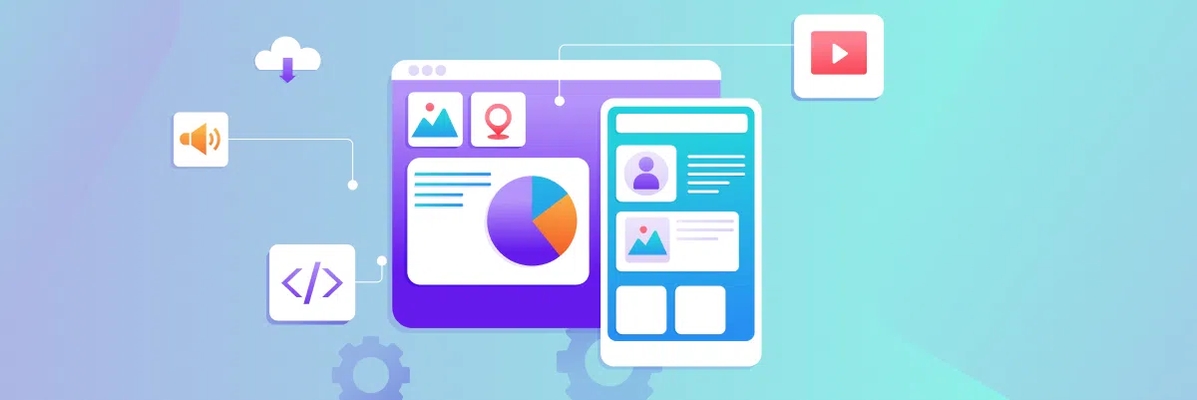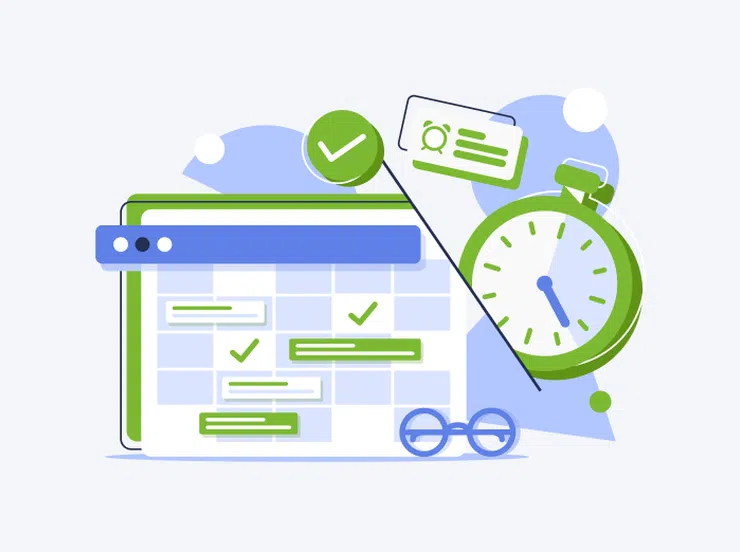How to Choose the Right Contractor for Web Application Development
To implement the idea of creating a web application, it is important to find a reputable partner who will develop it. Though, this task is not easy and requires an integrated approach to the solution, high-quality analytics, and planning — after all, the IT segment is overflown with software developers. Besides, because the mobile application market keeps expanding, developing your own product is rather a matter of time than a choice or preference.
The company SDH specializes in developing web applications and provides a full cycle of the operation from planning to implementation and support of the product. We have completed hundreds of orders and managed to study all the customer's problems when looking for a contractor. Below is an algorithm to help you find a responsive web application development contractor.

Main steps in choosing the right contractor for web application development
The choice of that very developer is not only the technically correct implementation of the TOR. Finding a team that intuitively understands your vision of the future application, its mission, and its tasks is important.
Obviously, performers must meet several criteria:
- Knowledge. Excellent education in the field of IT, and knowledge of coding is an unconditional basis that will allow you to create a functional application that attracts users;
- Experience, including the one in your domain. Years of practice in writing applications often weigh much more than a diploma from a prestigious course. Such specialists can "grope" for the necessary trends in the design of the application, recognize the audience's requests and respond to them in a relevant way;
- Understanding the importance of the intellectual property. Regardless of the interaction format — onshore, nearshore, or offshore dedicated team.
And now, let's take a closer look at each stage for finding contractors.
Determine the requirements for the application
Further problems in the cooperation between the customer and the contractor are often rooted in insufficient communication at the start when a future project is being outlined. To avoid misunderstandings, determine the key requirements for the application:
- Tell us what your application is for, what it can do, and what benefits it brings to users. What tasks that a person has can be solved using the application;
- How the user interacts with the program. What are the desired options, trends in design, etc.;
- Are there any examples of similar applications in terms of functions and implementation? It is advisable to bring them if any;
- What is an application specification? What areas can be identified as priorities?
Understanding the functionality and capabilities of the application by both parties is the way to the systematic implementation of the project.
Carefully study companies’ portfolios
When looking for a partner to write a web application, a customer, as a rule, first of all, googles the information. For the query "web application development services," a search engine offers hundreds of pages. Surely, it is possible to examine all the sites thoroughly, but it takes a lot of time and effort. Therefore, the first thing to do is to ask yourself: “How do I plan to find a contractor?”, “Where can I do this?”
Such as electronic catalogs and reference books, such as Clutch.co, GoodFirms, The Manifest, etc., may be useful. There you will find information about services the development companies provide and the areas they act in. Technical expertise gives a deep understanding of the experience and skills of the team. It helps identify the size of the project the contractors take on and their hourly pay for it. The number of employees is another important marker that clarifies the status and scope of the contractor's performance. As additional information, there is a company's foundation date and ratings from other agencies.
Besides, here one can read reviews of real customers indicating the reliability (or unreliability) of a contractor and their experience. Take a quick look at the methodology of the work: perhaps, in your case, a particular tool is not a very good solution. Generally speaking, it is important that the performer has already been involved in projects in your field.
Comply with the criteria of time, budget, and scope
The key points for both the customer and the contractor are the time spent on the project, the budget, and the number of resources. Businesses normally look forward to speedy completion without any issues and delays for reasonable money. However, concentrating only on price shifts the focus from solving the project tasks to not exceeding the budget.
To understand how you will work further, ask questions in advance: how is the price calculated? Do you need to make payments several times in installments or make 100% payments immediately? What is the probability that additional development costs will have to be covered in the course of work?
The contractor, in turn, must tentatively designate a work schedule based on which the cost is calculated.
In your turn, you have the right to clarify whether the contractor can work on several projects simultaneously or if they are developing something else. What time frame do you expect in this case? Does the company have additional resources to bring in if the team doesn’t meet the deadline?
It is important for both parties to speak transparently during the conversation. This will allow you to adequately assess business processes and the contractor's compliance with your requirements.
Define the type of your web-application
You should start the development of your web application by defining the type of project. Depending on complexity they can be divided to:
- simple: business card website, entry-level online store, applications for simple tasks; when implementing such projects, ready-made (boxed) solutions and templates are used;
- medium: online stores with a complex structure, marketplaces, GIS portals of the city, regional level, services (for example, for ordering a taxi), applications for solving complex problems (teaching a foreign language, complex calculations, etc.);
- complex: (large-scale portals, social networks, CRM / ERP systems, innovative and non-standard solutions); such projects are developed in a programming language from scratch: a unique core, client and server modules, own styles, etc. are designed.
Large-scale web projects can consist of many heterogeneous elements and modules: one programming language and several auxiliary ones are used at the core. This also applies to databases: for some tasks, relational databases are used, for others, key/value databases are used.
Choice of technologies for a web application
There are three main approaches to web-applications development: single-page application (SPA), multi-pages application (MPA), and progressive web application (PWA):
- SPA or Single Page Application is a single-page web application that loads on a single HTML page. Users don't need to reload or load additional pages due to dynamic updates using JavaScript. In other words, users see all the main content in the browser, and when they scroll the page or go to others, the necessary elements are simply loaded.
- MPA or Multi Page Application is a multi-page application where the page is updated with every data change or new information is loaded,
- PWA or Progressive Web App is a kind of hybrid of a website with a mobile application. They can be installed on the main screen of a smartphone, send push notifications, and work offline.
Consulting with a technical advisor will help you choose the right approach for your product, considering its functionality, development budgets, and scalability.
Our main technology stack is based on Python, for most custom web applications, we use the Django framework. This stack includes using different databases depending on the type of project. Among the advantages of Django is the high degree of security, scalability, and flexibility of a web application.
Get a free consultation from a specialist of Software Development Hub.
Getting to know project managers
Since the application development process is time-consuming (for example, an MVP can take 3 to 6 months), it is important to partner with a company to ensure proper project management throughout the entire period. Customers often mistakenly expect a full-featured product to be made shortly. One of the project manager's missions is to manage a customer's expectations so that he receives the planned scope of work performed within the specified time frame. Regardless of the development approach, Agile or Waterfall, reputable, experienced companies know how to manage risks and expectations, even if goals shift in the course of work. An honest, friendly project management team not only responds to the client's requests but also gently adjusts activities and tasks to achieve overall results.
SDH is a reliable partner with expertise in application development for various business areas. In our work, we constantly communicate with our customers and are ready for interaction.
Categories
Share
Need a project estimate?
Drop us a line, and we provide you with a qualified consultation.










